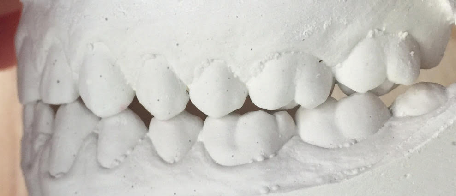What's the Right Option for Increasing Overjet?
By Donna Stenberg on September 24, 2015 |I’d like to share a case with you. After reading through the case and my approach, I encourage you to share your thoughts in the comments below, or by starting a discussion in SpearTALK.
I have a 19-year-old healthy male patient with a chief complaint of a missing #6 with the retained primary canine present. My restorative dentist will want more overjet to both restore and prevent further wear due to the end-on-incisor occlusion. I plan to close the upper midline space to open an equal size space for a future canine implant in a Class I canine position.
Dr. Frank Spear discusses methods of increasing overjet; we can procline the upper anterior teeth or retract the lower anterior teeth. Increasing the vertical dimension of occlusion in this case would require unneeded restorations of the posterior teeth. To discuss this with the restorative dentist and the patient, I have two setups shown below.
(Click here for more on communicating about implants with specialists.)



Lateral incisor extraction option
First is a lower incisor extraction where all the space closes with the retraction of the remaining lower incisors. The left canine now is in an incisor position and the guidance will have to be on the lower first bicuspid. I estimate the treatment time at 12 to 18 months.



Lower left bicuspid extraction option
The second setup is extraction of #21. This plan allows the upper and lower midlines to center, creates the needed overjet with retraction and establishes canine guidance. The molars end up protracting into a full Class III canine. The treatment time here will be extended to protract the molars forward.



No single conclusion
This is not an exercise to find the right choice because, of course, there is no single correct answer. For each patient, a decision will be made based upon his or her unique needs and preferences.
I found that having a discussion with the restorative dentist about increasing this particular patient's overjet helped us understand the “hows” and “whys” when deciding upon the best choice for this patient. Our discussion included:
- Is an implant acceptable in the canine position?
- Is it essential for long-term stability to have canine guidance on the left Class III side?
- Is surgery an option?
- Is there value in the added orthodontic treatment time and cost?
- Will the family’s finances permit the best option?
When the family meets for the case presentation, however they decide to move forward, it will be based on clear expectations and outcomes. That is always the ideal choice.
(Click this link for more articles by Dr. Donna Stenberg.)
Donna J. Stenberg D.D.S., M.S., P.A. Spear Visiting Faculty and Contributing Author. www.stenbergorthodontics.com